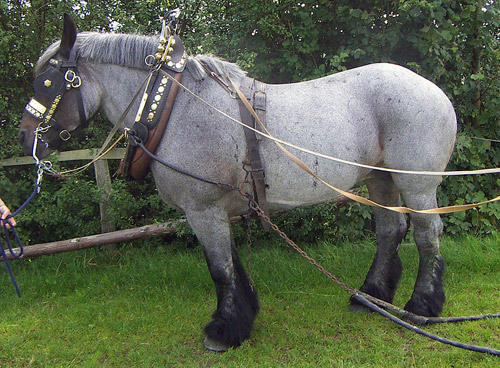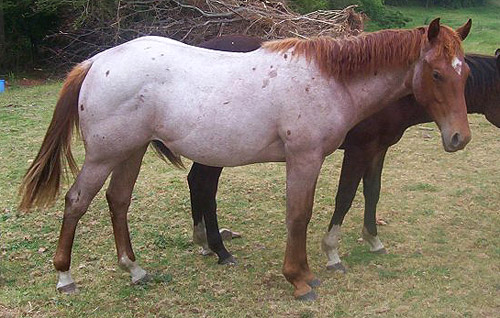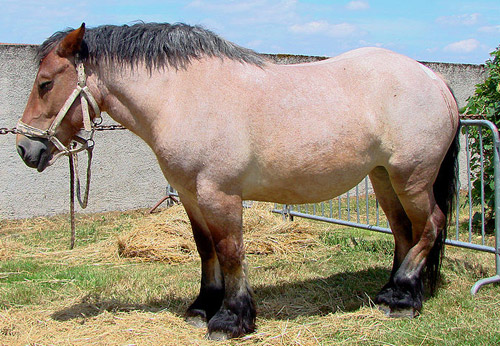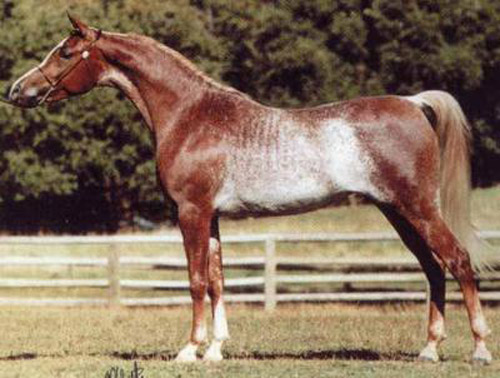
Image from Virginia Cowboy
Horses affected by the roan color pattern display a rainbow of colors from almost pink to almost blue which are often mislabeled as grey.
However the fundamental difference between the two (besides genetics) is that roan horses tend to retain their base color on their face, mane, tail and legs and they do not become more grey with age.
However the fundamental difference between the two (besides genetics) is that roan horses tend to retain their base color on their face, mane, tail and legs and they do not become more grey with age.
Classic Roan
- Caused by dominant gene
- Color caused by white hairs mixing with colored hairs
- Any color can roan
- Effect can be masked by grey, appaloosa or pinto patterns
- Dark leg markings come to a point above the knee
- Less common than grey
- Change with every shedding
- Some get darker with age
- Can exhibit dapple and reverse dapple
- When injured regrowth of hair is solid color of base coat
- True or classic roan can be mistaken for leopard complex in appaloosas
Types of Roan
The many different shades of roan fall under the following categories.
Black Roan / Blue Roan

Image from Caronna
- Roaning pattern on black base
- Causes a grey, blue or purple tint
- Head mane tale and legs stay black
Strawberry Roan

Image from Kumana @ Wild Equines
- Roaning gene on chestnut base
- Causes a reddish tint of varying degrees
- Head mane tale and legs stay solid and red
Bay Roan

- Roaning pattern on bay coat
- Causes a pink, red tint
- Head legs mane and tail stay black
Rabicano

Image from Kersti Nebelsiek
- Most often mistaken for sabino pinto pattern
- Pattern specifically on base of tail, flank and belly areas
- Varies from animal to animal
- Can extend up around ribcage
- Can also be called: White ticking, highlights or skunk tail

No comments:
Post a Comment